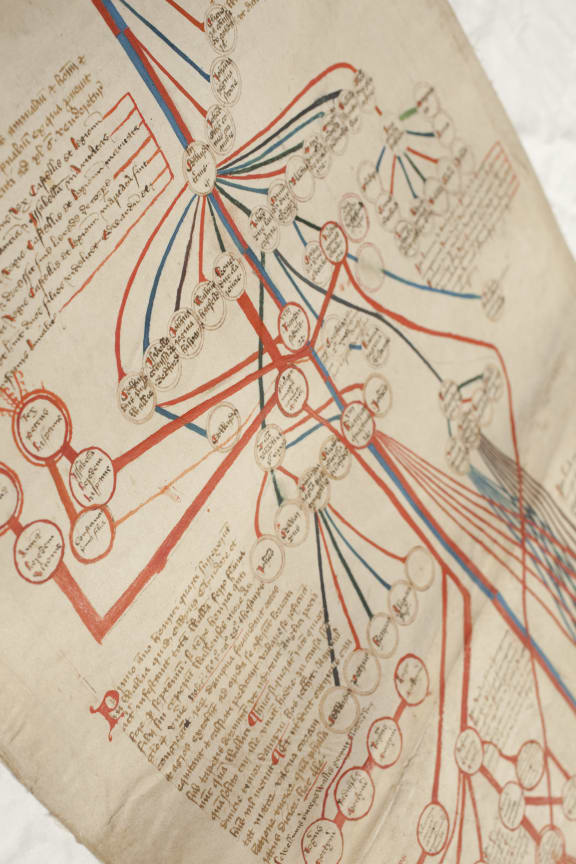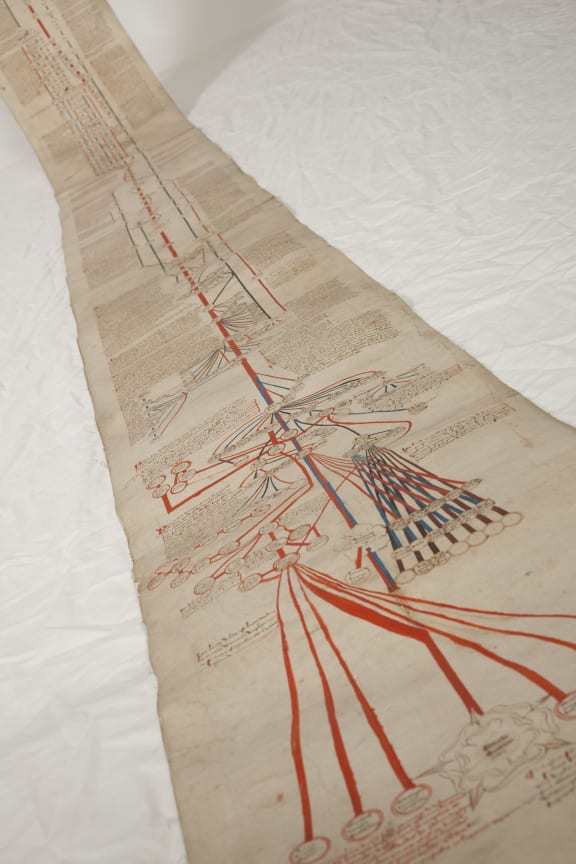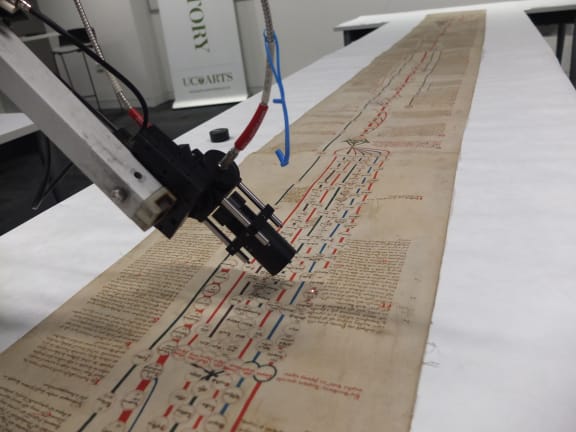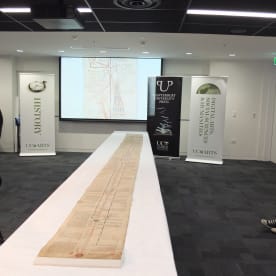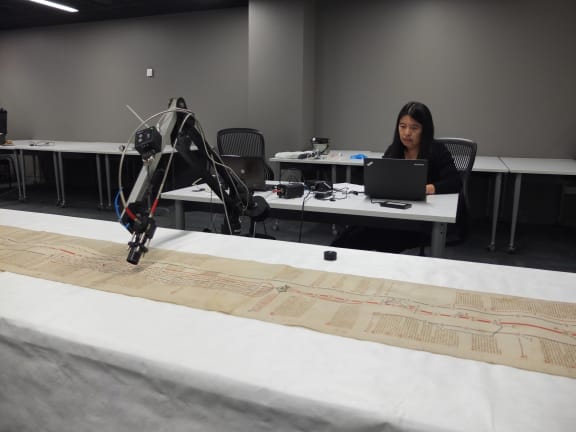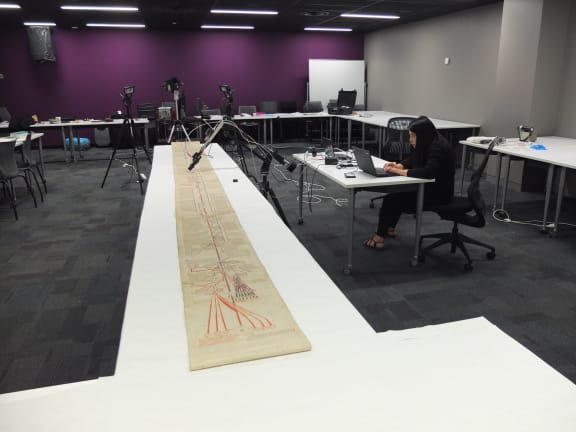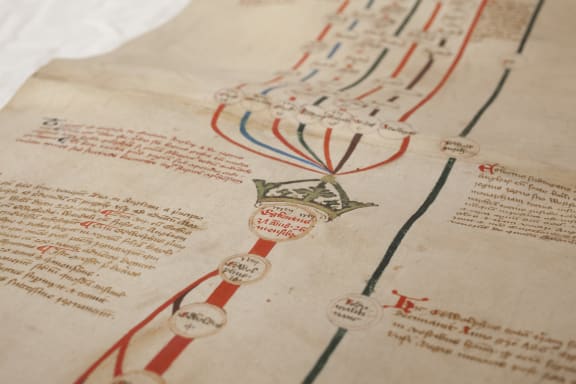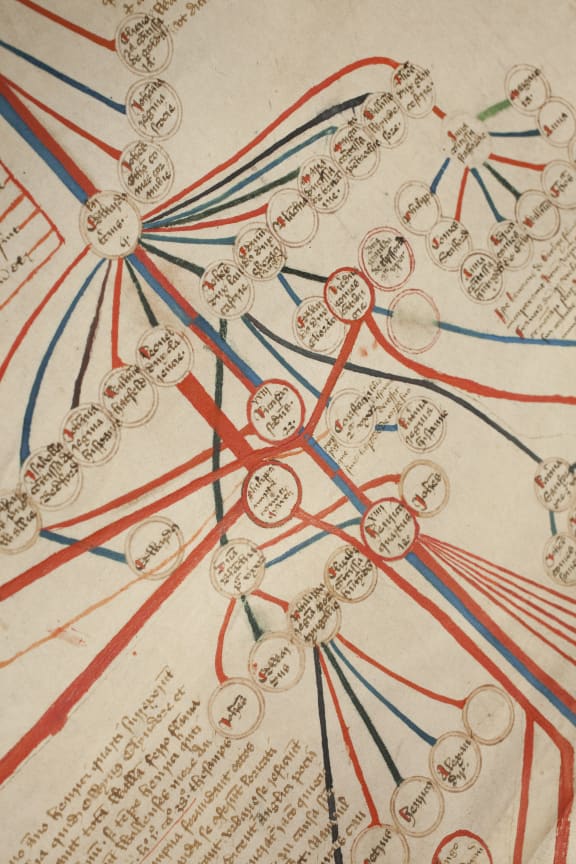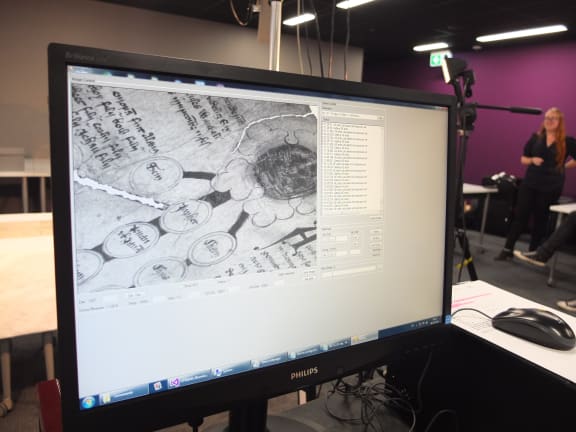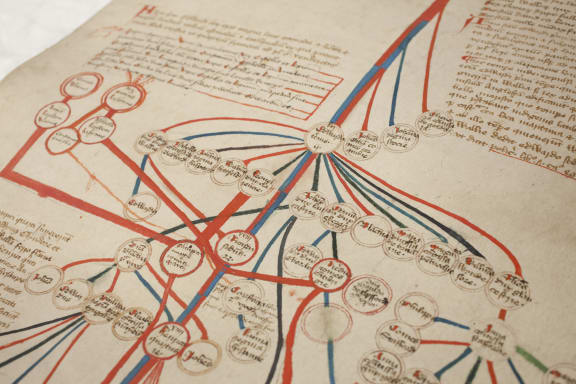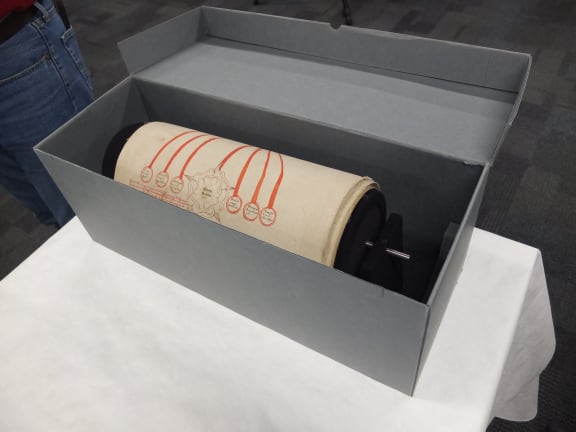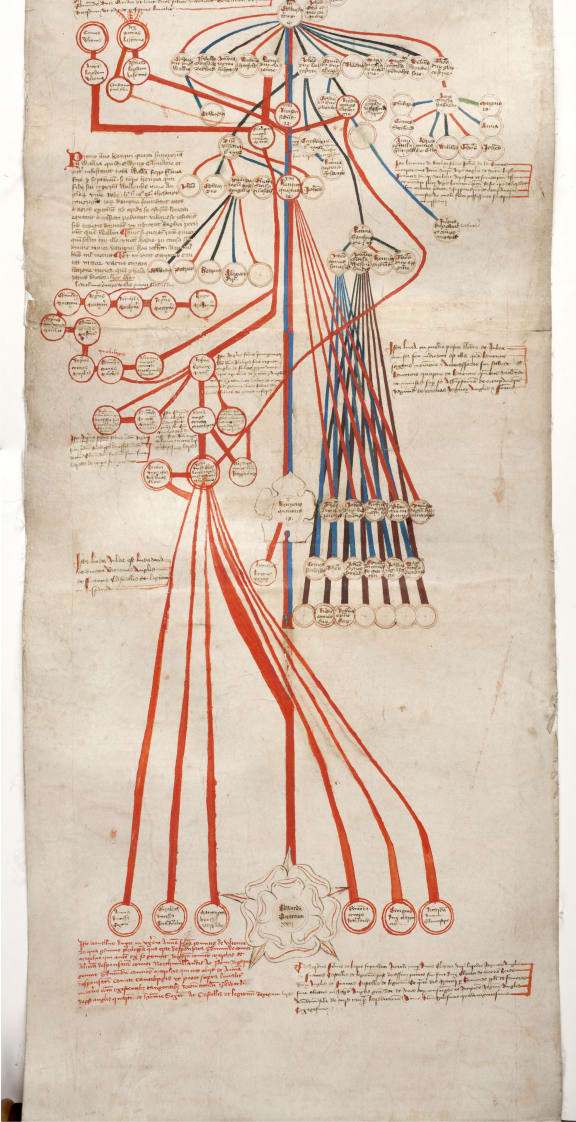After six hundred years the secrets contained in a mysterious medieval document, could soon be unlocked thanks to New Zealand detective work and help from British imaging specialists.
The illuminated genealogical scroll, known as the Canterbury Roll, dates to the Wars of the Roses.
It charts the history of the English throne from pre-Roman to late medieval times. As such it holds all the twists and turns, political plots, and dynastic rivalries, that you'd expect from a manuscript created around the times of the Wars of the Roses. It even contains some of the earliest examples of fake news.
It was acquired by the University of Canterbury in 1918 and remains the only genealogical roll in the southern hemisphere. No-one knows who commissioned the scroll, or its whereabouts for a hundreds of years.
Scientists at Canterbury have already discovered that a Lancastrian red rose was superimposed over a drawing of Noah's Ark at the beginning of the roll.
The University of Canterbury's medieval historian Dr Chris Jones told Kathryn Ryan it came into the possession of the university in 1918.
“It came into our hands via a famous Christchurch figure Sibylla Maude [founder of Nurse Maude] back in 1918. She sold it to the University of Canterbury for the princely sum of 50 pounds,” Jones says.
For this modest amount the university acquired a “five meter long extravaganza of medieval history.”
The roll was started in the late 1420s.
“We know a little bit about the history of the roll up to 1485. We can carry its history through to the end of Richard III and the beginning of the Tudor period.”
However its whereabouts from the Battle of Bosworth until the end of World War I are mystery.
“We have absolutely no idea where it was or who had it until 1918 and it turns up in New Zealand.
“It’s possible it came into the hands of the Maude family at an early date, it’s equally possible that it was on the market in the 19th century and they picked it up as an interesting item.”
The roll is 5 metres long and 30cm wide and is made of six pieces of parchment stuck together.
“It starts with the red rose of Lancaster which we discovered is hiding Noah’s Ark. A central red line runs the length of the parchment and along that red line we have a scattering of roundels and in each is a character from about the 9th century.”
The characters include King Egbert, William the Conqueror, King Arthur, Emperor Constantine of Rome and the gods Jupiter and Saturn.
“When you get to the end of the roll you start to find contemporary kings when it was first created,” Jones says.
“It would have ended with the contemporary Lancastrian king Henry VI but it’s an amazing attempt to connect him back through virtually everything to the Bible.”
Jones explains that Henry VI was in trouble and was being challenged by the Yorkists - the roll was a kind of parchment propaganda.
“The point of producing a roll like this is to show without a shadow of a doubt that Henry is the legitimate king.”
Legitimate or otherwise Henry VI was a pretty average king.
“He’s very unstable, he’s not very good at what he does, he’s nowhere near the man his father Henry V was and this leads to insurrection.
“And we get another family the Yorkist family trying to replace him. In the 1460s. Edward IV comes to the throne and our roll gets involved in all of this.”
The roll, he says, was originally produced to justify the Lancastrian line and at some point falls into hands sympathetic to the House of York.
“And we get a Yorkist scribe who effectively wants to update the whole thing.”
It is part of a group of rolls called the Noah group. The original roll-maker would have gone out and collected a vast number of chronicles and texts, Jones says.
“He then turned them into a digest version basically, with a huge amount of quite careful editing to give you a very particular presentation of history.”
He turns then turns these texts over to a scribe who does all the donkey work - and some of his mistakes can still be seen.
“If you think of the rollmaker as a sort of architect, the Lancastrian scribe is more a sort of builder - and you can tell at times he’s knocked off early to go to the pub!”
